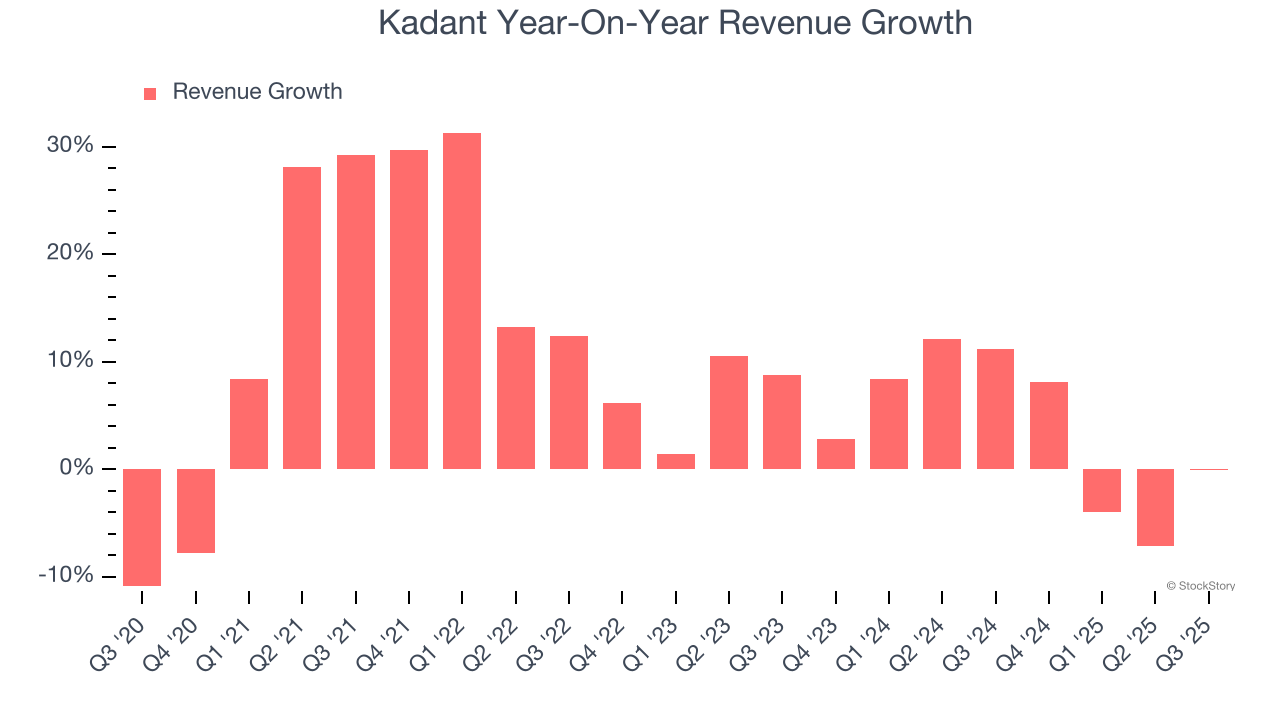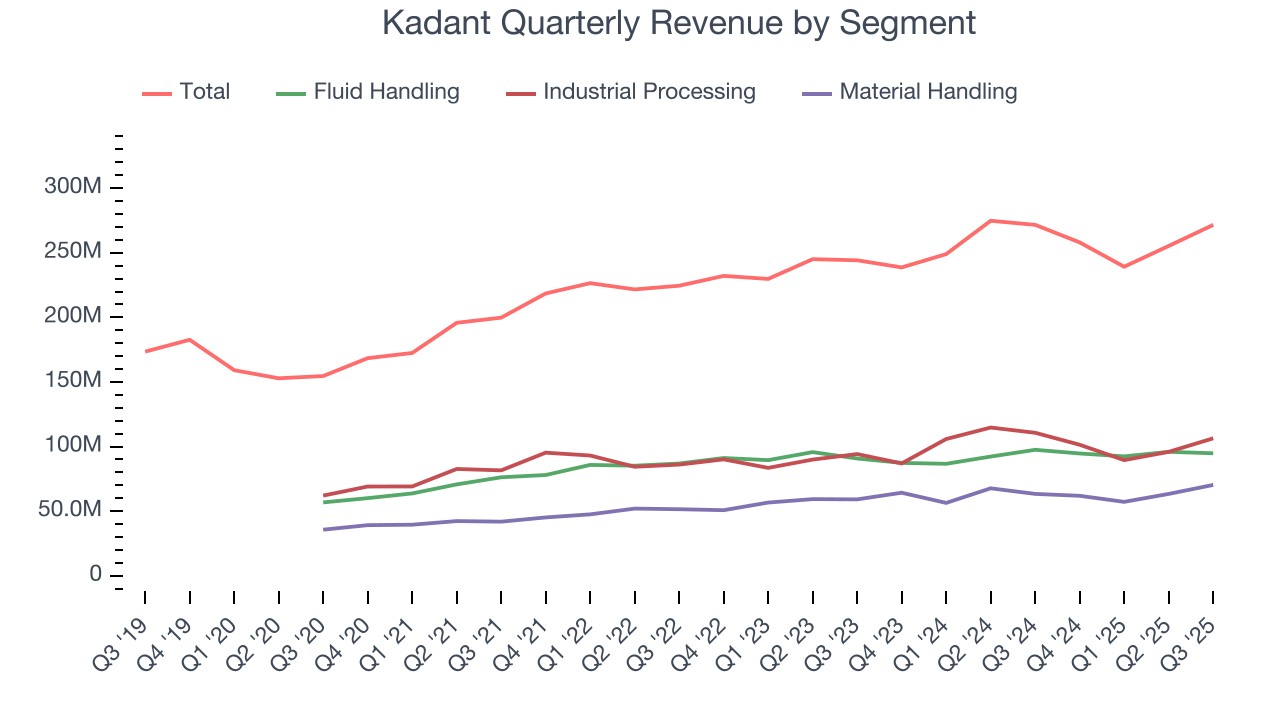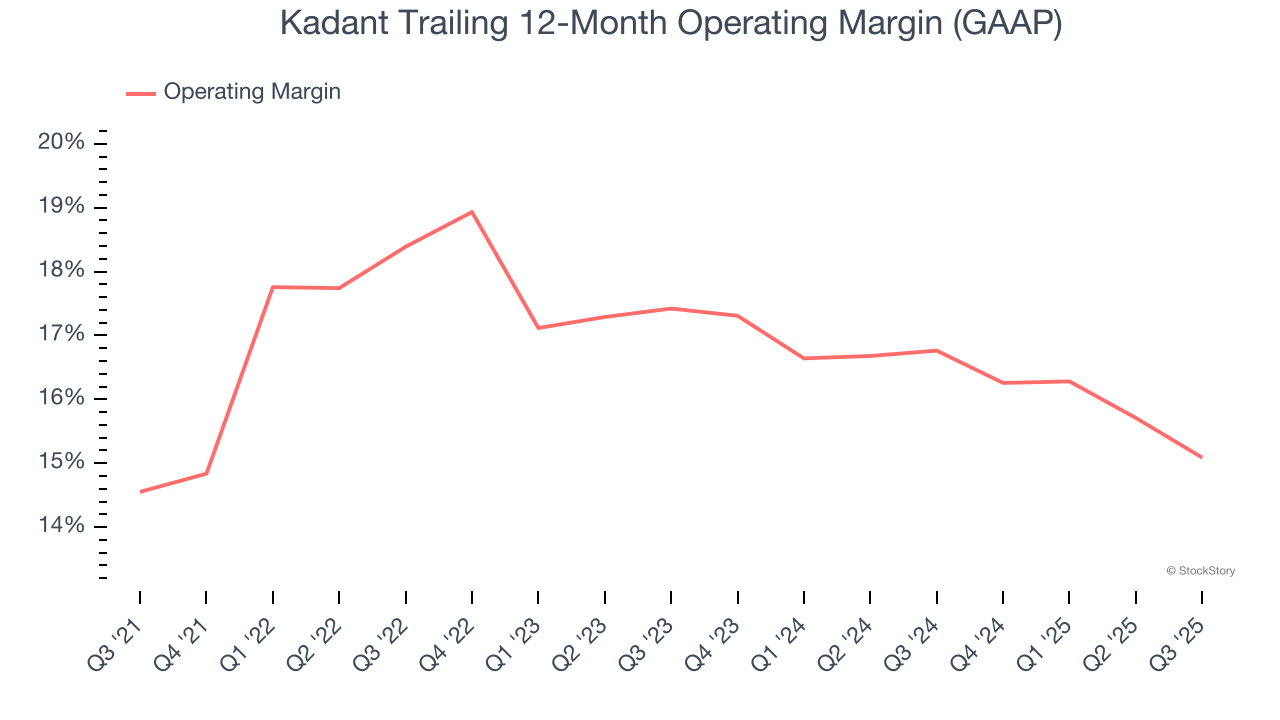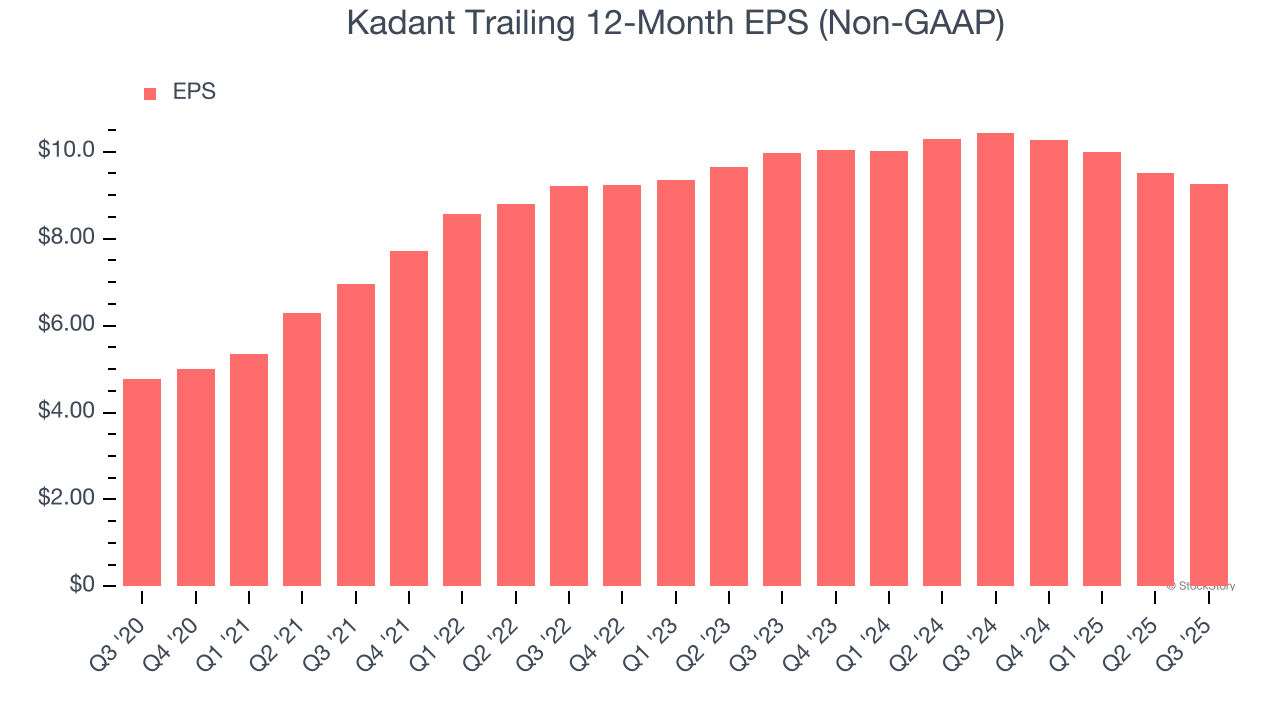
Industrial equipment manufacturer Kadant (NYSE: KAI) beat Wall Street’s revenue expectations in Q3 CY2025, but sales were flat year on year at $271.6 million. Revenue guidance for the full year exceeded analysts’ estimates, but next quarter’s guidance of $275 million was less impressive, coming in 1.6% below expectations. Its non-GAAP profit of $2.59 per share was 19.7% above analysts’ consensus estimates.
Is now the time to buy Kadant? Find out by accessing our full research report, it’s free for active Edge members.
Kadant (KAI) Q3 CY2025 Highlights:
- Revenue: $271.6 million vs analyst estimates of $260.7 million (flat year on year, 4.2% beat)
- Adjusted EPS: $2.59 vs analyst estimates of $2.16 (19.7% beat)
- Adjusted EBITDA: $58.02 million vs analyst estimates of $51.13 million (21.4% margin, 13.5% beat)
- Revenue Guidance for Q4 CY2025 is $275 million at the midpoint, below analyst estimates of $279.6 million
- Management reiterated its full-year Adjusted EPS guidance of $9.15 at the midpoint
- Operating Margin: 15.7%, down from 18% in the same quarter last year
- Free Cash Flow Margin: 16.2%, down from 17.8% in the same quarter last year
- Market Capitalization: $3.58 billion
“Despite a persistent softness in demand for capital equipment and continued global trade uncertainties, our businesses executed well and delivered solid gross margin performance during the quarter,” said Jeffrey L. Powell, president and chief executive officer of Kadant Inc.
Company Overview
Headquartered in Massachusetts, Kadant (NYSE: KAI) is a global supplier of high-value, critical components and engineered systems used in process industries worldwide.
Revenue Growth
Reviewing a company’s long-term sales performance reveals insights into its quality. Any business can put up a good quarter or two, but many enduring ones grow for years. Over the last five years, Kadant grew its sales at a solid 9.5% compounded annual growth rate. Its growth beat the average industrials company and shows its offerings resonate with customers.

We at StockStory place the most emphasis on long-term growth, but within industrials, a half-decade historical view may miss cycles, industry trends, or a company capitalizing on catalysts such as a new contract win or a successful product line. Kadant’s recent performance shows its demand has slowed as its annualized revenue growth of 3.8% over the last two years was below its five-year trend. 
Kadant also breaks out the revenue for its three most important segments: Fluid Handling, Industrial Processing, and Material Handling, which are 34.9%, 39.2%, and 25.9% of revenue. Over the last two years, Kadant’s revenues in all three segments increased. Its Fluid Handling revenue (piping, cleaning, and filtration) averaged year-on-year growth of 1.6% while its Industrial Processing (paper and timber processing equipment) and Material Handling (wood production equipment) revenues averaged 6.1% and 6.2%. 
This quarter, Kadant’s $271.6 million of revenue was flat year on year but beat Wall Street’s estimates by 4.2%. Company management is currently guiding for a 6.6% year-on-year increase in sales next quarter.
Looking further ahead, sell-side analysts expect revenue to grow 6.8% over the next 12 months. Although this projection suggests its newer products and services will spur better top-line performance, it is still below the sector average.
Unless you’ve been living under a rock, it should be obvious by now that generative AI is going to have a huge impact on how large corporations do business. While Nvidia and AMD are trading close to all-time highs, we prefer a lesser-known (but still profitable) stock benefiting from the rise of AI. Click here to access our free report one of our favorites growth stories.
Operating Margin
Operating margin is one of the best measures of profitability because it tells us how much money a company takes home after procuring and manufacturing its products, marketing and selling those products, and most importantly, keeping them relevant through research and development.
Kadant’s operating margin might fluctuated slightly over the last 12 months but has remained more or less the same, averaging 16.5% over the last five years. This profitability was elite for an industrials business thanks to its efficient cost structure and economies of scale. This result isn’t surprising as its high gross margin gives it a favorable starting point.
Analyzing the trend in its profitability, Kadant’s operating margin might fluctuated slightly but has generally stayed the same over the last five years. This raises questions about the company’s expense base because its revenue growth should have given it leverage on its fixed costs, resulting in better economies of scale and profitability.

This quarter, Kadant generated an operating margin profit margin of 15.7%, down 2.3 percentage points year on year. Since Kadant’s operating margin decreased more than its gross margin, we can assume it was less efficient because expenses such as marketing, R&D, and administrative overhead increased.
Earnings Per Share
Revenue trends explain a company’s historical growth, but the long-term change in earnings per share (EPS) points to the profitability of that growth – for example, a company could inflate its sales through excessive spending on advertising and promotions.
Kadant’s EPS grew at a remarkable 14.1% compounded annual growth rate over the last five years, higher than its 9.5% annualized revenue growth. This tells us the company became more profitable on a per-share basis as it expanded.

Like with revenue, we analyze EPS over a more recent period because it can provide insight into an emerging theme or development for the business.
For Kadant, its two-year annual EPS declines of 3.6% mark a reversal from its (seemingly) healthy five-year trend. We hope Kadant can return to earnings growth in the future.
In Q3, Kadant reported adjusted EPS of $2.59, down from $2.84 in the same quarter last year. Despite falling year on year, this print easily cleared analysts’ estimates. Over the next 12 months, Wall Street expects Kadant’s full-year EPS of $9.25 to grow 5.8%.
Key Takeaways from Kadant’s Q3 Results
We were impressed by how significantly Kadant blew past analysts’ revenue, EPS, and EBITDA expectations this quarter. On the other hand, its revenue and EPS guidance for next quarter fell short of Wall Street’s estimates. Overall, we think this was a mixed quarter. The stock remained flat at $299 immediately following the results.
Kadant put up rock-solid earnings, but one quarter doesn’t necessarily make the stock a buy. Let’s see if this is a good investment. The latest quarter does matter, but not nearly as much as longer-term fundamentals and valuation, when deciding if the stock is a buy. We cover that in our actionable full research report which you can read here, it’s free for active Edge members.






